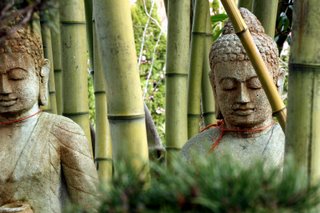
What is a Walking Meditation
Walking Meditation
What is it?
This component of numerous meditation traditions slows the walking process with the intention of bringing into awareness its most basic parts—lifting the foot, swinging it, placing it down—in order to bring a greater consciousness to daily life. When we break down the motion of walking, we realize how each action is a collection of sub-actions, and how the mind and body work together to create movement. “This is not walking for transportation, it’s walking as a tool for developing mindfulness in the present moment,” says John LeMunyon, L.M.T., co-owner of Heartwood Yoga in Birmingham, Ala., and a meditator for 30-plus years. You can practice walking meditation by itself, or combine it with one of the seated styles on the preceding pages. Used as an interlude, the walking technique is a good way to embody the insights gained during seated practice and to heighten their relevance in your daily life. Walking meditation shows clearly the Buddhist precept that “all action is preceded by intention,” says LeMunyon. “There’s always an intention; and when we are present to the moment, there is always a choice. It’s at the level of intention that we make our choices of how skillfully we want to live our lives.”
What’s it good for?
When you find yourself feeling restless or agitated, a physical practice like walking is a great way to quiet your mind and find grounding in your body. It can also help ease your transition from sitting meditation to the motion of “real life,” and vice versa.

Walking Meditation
How long does it take?
To begin, try walking for about 15 steps in two directions, about five minutes total. Or try interspersing this with five minutes of seated meditation.
How do I do it?
1. Find a private indoor or outdoor place with level ground and at least 20 feet of space to move.
2. Stand in a relaxed position with your feet parallel, shoulders loose, arms draped at your sides or clasped lightly in front of or behind you. Focus your eyes softly on the ground about 6 to 8 feet ahead (looking right at your feet can be distracting).
3. Breathe in as you lift your right heel. Pause and breathe out, leaving your toes resting on the ground.
4. Breathe in again as you slowly swing your right foot forward. Place the heel of your right foot on the ground as you exhale and roll the rest of the foot down, transferring your weight so it’s balanced between both feet. Pause for a full breath.
5. Repeat the entire sequence with your left foot, again matching each movement with an inhalation or exhalation, alternating for 15 steps. The goal is to keep your mind fully focused on your bodily sensations; it may help to think or softly say, “Lift, pause, swing, place, transfer, pause,” as you perform these movements.
6. When you’ve completed your paces in one direction, come to a stop with your feet parallel and pause for a few breaths. Then turn slowly, using the same movement pattern and matching each movement with an inhalation or exhalation. Pause again, facing the path you just walked. End by retracing your steps back to where you started.
adapted from naturalhealthmag.com By Frances Lefkowitz

Zen Alarm Clocks and Meditation & Yoga Timers with Acoustic Sounds
Now & Zen – The Chime Alarm Clock Store
1638 Pearl Street
Boulder, CO 80302
(800) 779-6383
Posted in Meditation Tools, Walking Meditation